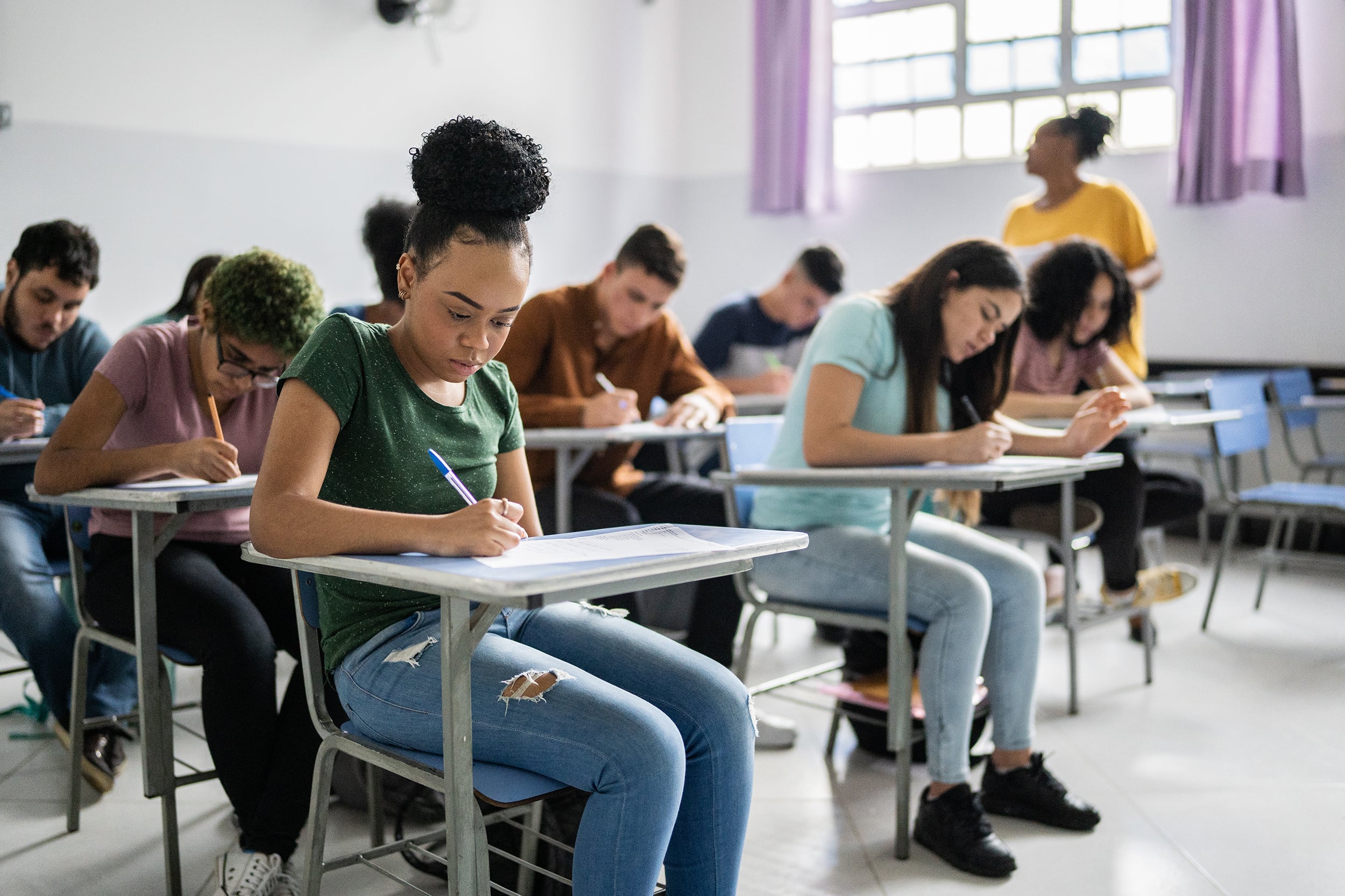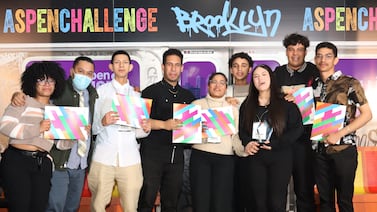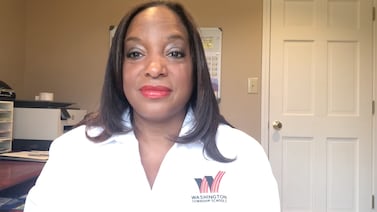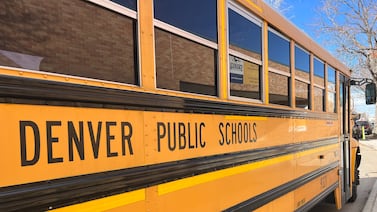Sign up for Chalkbeat New York’s free daily newsletter to keep up with NYC’s public schools.
The epicenter of New York’s test refusal movement has long been outside the five boroughs, taking root in whiter and more affluent school districts, particularly on Long Island.
But since the pandemic, the share of families opting out of the annual state tests has more than doubled in New York City — even as the statewide rate has fallen.
The opt-out rate on the state English language arts exam in New York City grew from about 4% in 2019 to 8% in 2023, the most recent data available.
Across the state, the refusal rate dipped from nearly 19% to just below 14% over the same period, according to a recent analysis of district averages conducted by Olivia Ildefonso. She studied the opt-out movement as a graduate student and is CEO of a company called North Arrow that produced an interactive map that tracks test refusals in New York. (The analysis focuses only on the reading tests, though officials confirmed the New York City trends are similar for both the reading and math tests.)
There does not appear to be a single explanation for why the city and state opt-out rates are trending in different directions. Some educators and observers suggested families may have begun to see tests as optional, or even question their value.
The grades 3-8 exams were canceled entirely in 2020. When they came back in 2021, families had to opt in, a reversal of the traditional policy that students must take them unless they explicitly opt out. Only 20% of New York City families opted in to take the exams that year, compared with about 40% across the state.
“During the pandemic it was like, ‘Wait, my kids don’t have to take these tests?’” said Kaliris Salas-Ramirez, an East Harlem parent who serves on the Panel for Educational Policy and has opted her son out of state testing for years. “The conversations I’ve been having with families is: ‘Why is it worth it for our kids?’”
Notably, there did not seem to be a larger-than-usual organizing effort in the city to persuade families to sit out the exams, said Aaron Pallas, a professor at Columbia University’s Teachers College who has studied school assessment data.
“I’m kind of puzzling over this,” Pallas said of the higher opt-out rate in the wake of the pandemic.
The opt-out movement initially gained steam a decade ago, when state test scores plunged after they were aligned to the Common Core, part of a national effort to get states to adopt tougher reading and math standards. Many educators were furious about being evaluated based on those scores.
Opt-out rates have historically been highest outside the city, and the movement has long been associated with more affluent suburban districts. Last year, roughly a quarter of Long Island districts had refusal rates above 50%, according to Ildefonso’s analysis.
Test refusal remains lower in New York City, and many campuses with high opt-out rates are in progressive pockets in Brooklyn and Manhattan. But there is also evidence that city families from a wide range of racial and socioeconomic backgrounds are opting out.
In District 4, which covers East Harlem, the opt-out rate more than doubled in the wake of the pandemic to 9.4%. Some families in the neighborhood told Chalkbeat in 2022 that they saw other caregivers opt out at schools where that was not previously the norm, especially in the wake of significant learning disruptions and mental health challenges tied to school closures.
“When compared to the rest of the state, the opt-out movement in NYC is fairly representative of the overall city population,” said Ildefonso. “I imagine that people’s reasons for participating are just as diverse.” (State officials do not release demographic data about which students opt out of exams. Ildefonso compared the demographics of the city’s 32 local districts with their opt-out rates.)
Refusal rates in the city’s charter sector remain low, but ticked up over the past four years from about 1.3% to 3.3%.
At Harlem Link Charter School, where 95% of students are Black or Latino and most come from low-income families, school officials saw a notable increase in families opting out of state tests. More than 13% opted out of the ELA exam in 2023, up nearly 5 percentage points from 2019, state data show.
Dan Steinberg, the school’s co-principal, said families have been probing the school more about how the tests are used, such as whether they play a role in the school’s promotion decisions (they don’t). He also noted that the city’s decision to eliminate the use of state tests for middle school admissions could be contributing, as the school runs through fifth grade and many students apply to district middle schools.
“It feels like a number of factors converging,” he said. “Families seem to just be asking more questions since COVID about the assessment in general.”
Although federal rules require that at least 95% of students in grades 3-8 sit for the exams, state education officials have generally shown little appetite for taking punitive action against schools or districts. A spokesperson for the state’s Education Department did not return multiple requests for comment on the city’s rising test refusal rates.
Long Island City mom Whitney Toussaint said she opted her son out of the fourth grade language arts test last year because of negative experiences with test prep. Her son, who receives special education services and has trouble decoding words, came home in tears after he struggled to finish a practice test.
“I didn’t want to take his confidence from school so I opted him out,” she said, noting that her son still took the math exam. “I’m going to do anything to make my son feel empowered and confident.”
Toussaint said her son’s reading skills have improved thanks to private speech and occupational therapies the family arranged on top of services at school. He felt confident enough to take the state reading tests that were administered this month.
Still, Toussaint, who is also the president of the District 30 parent council in Queens, said she’s noticed more families talking about their right to refuse the exams. “Once people know they have that option, they’re going to take it,” she said.
City Education Department spokesperson Nicole Brownstein emphasized that the state tests offer “valuable insight” into student performance, but the city is “committed to honoring parents’ decisions on participation.” She also noted the city’s opt-out rate dropped slightly last year, though data for this year’s exams is not yet available.
Kemala Karmen, a long-time parent activist with the grassroots group NYC Opt Out, said rising refusal rates could be connected to the city’s decision to deploy additional reading and math assessments to gauge student progress. “People are sick of their children having so much testing,” she said. She also suggested that families may have taken a more active role in their children’s educations during the pandemic and in the aftermath of racial justice protests.
Karmen is hopeful that the momentum continues, but she emphasized her group still receives reports of caregivers facing unwelcome pressure to take the state exams.
“We’re not cracking open the champagne yet,” she said. “It’s still not easy to opt out in New York City.”
Alex Zimmerman is a reporter for Chalkbeat New York, covering NYC public schools. Contact Alex at azimmerman@chalkbeat.org.








